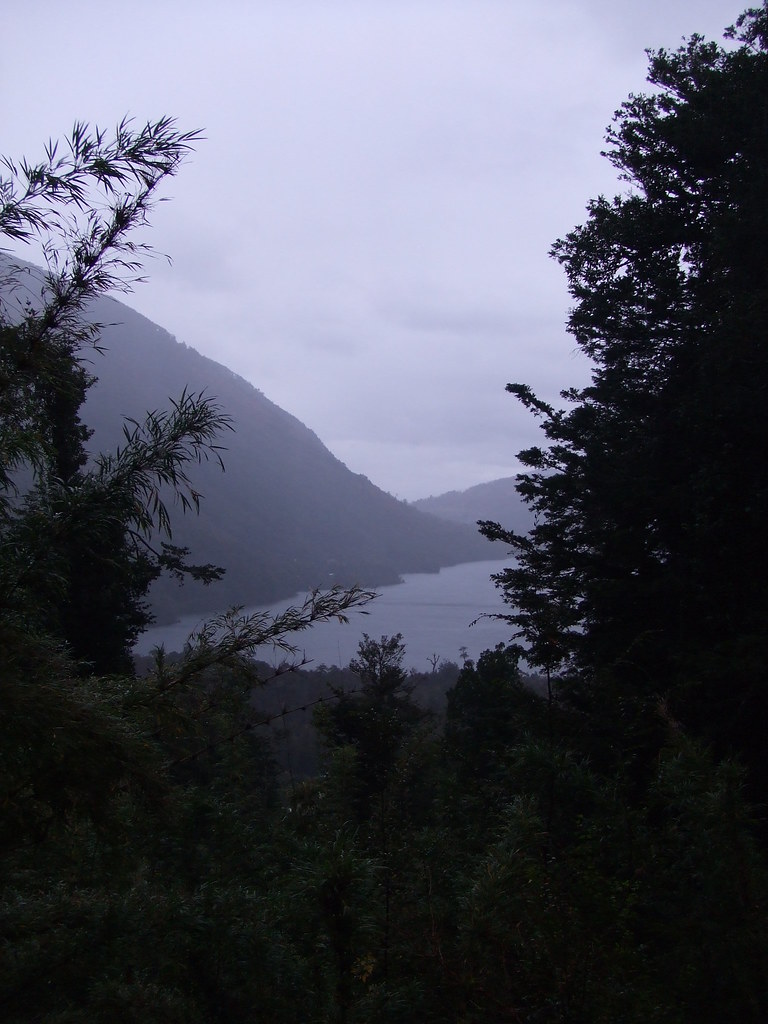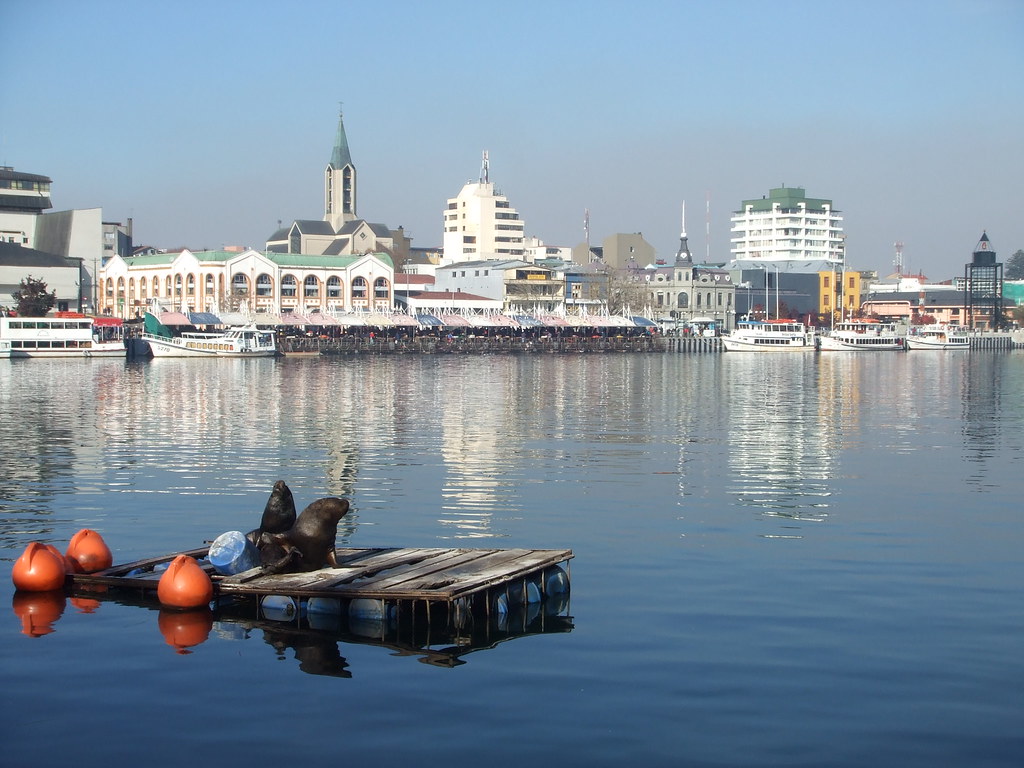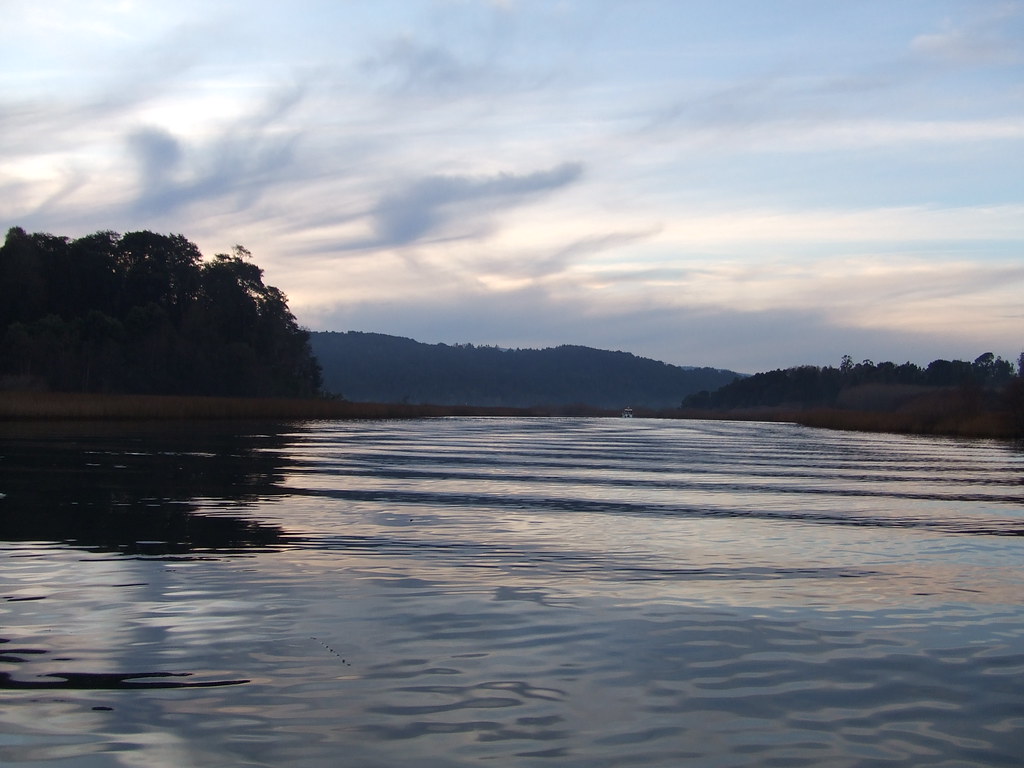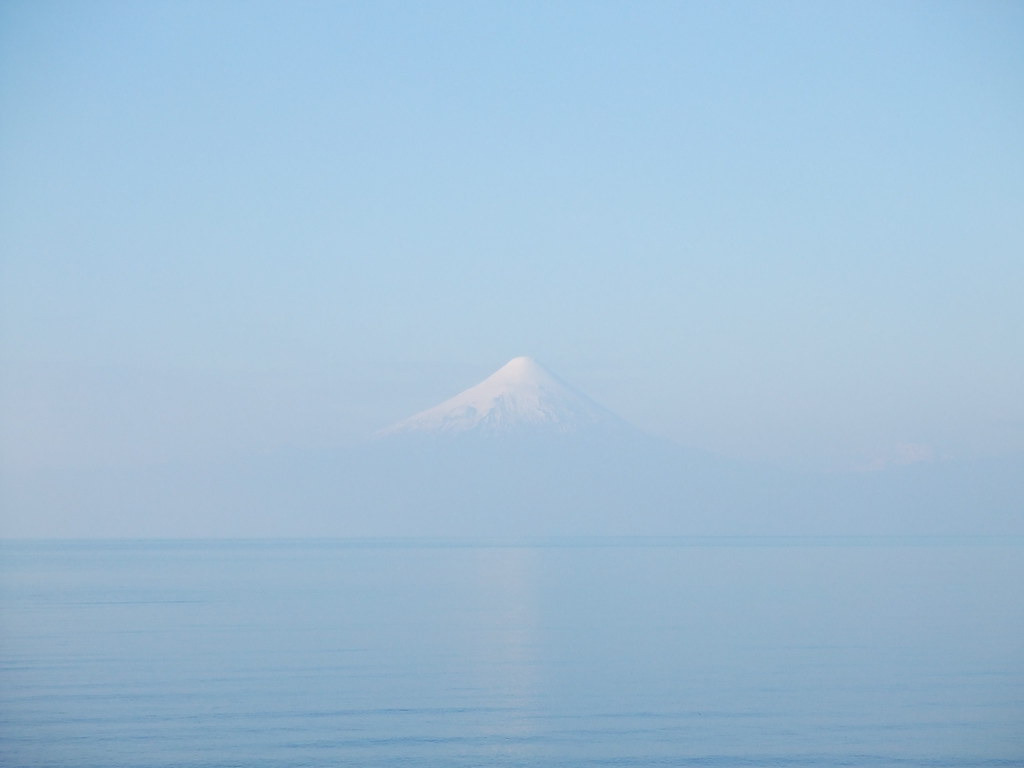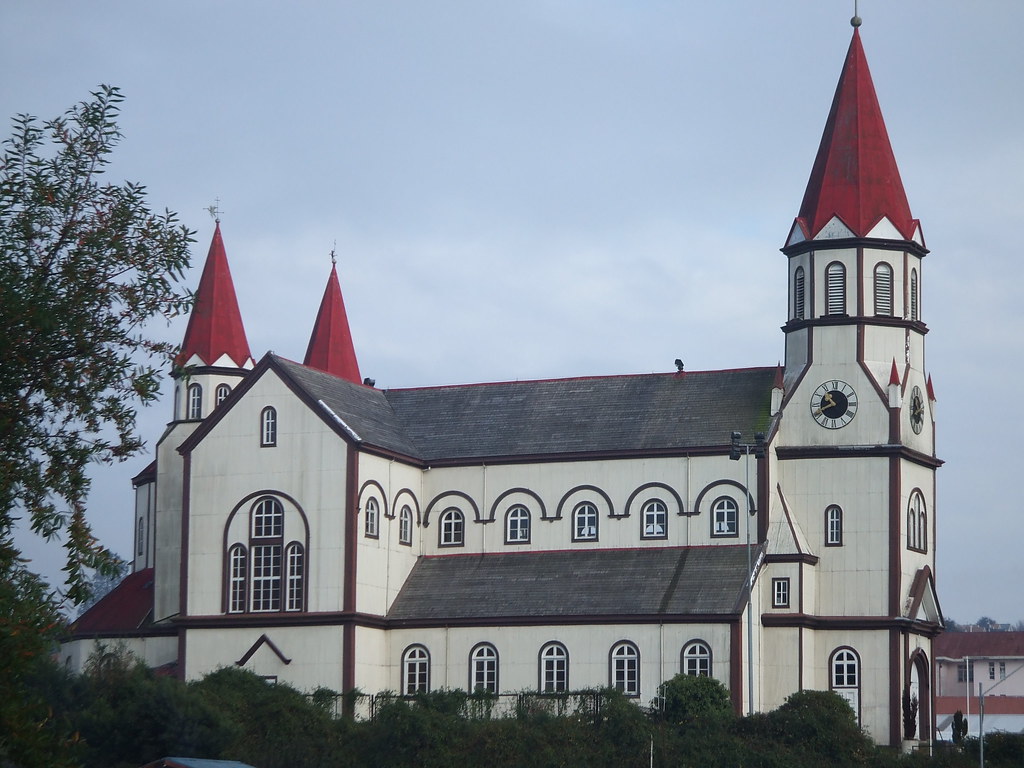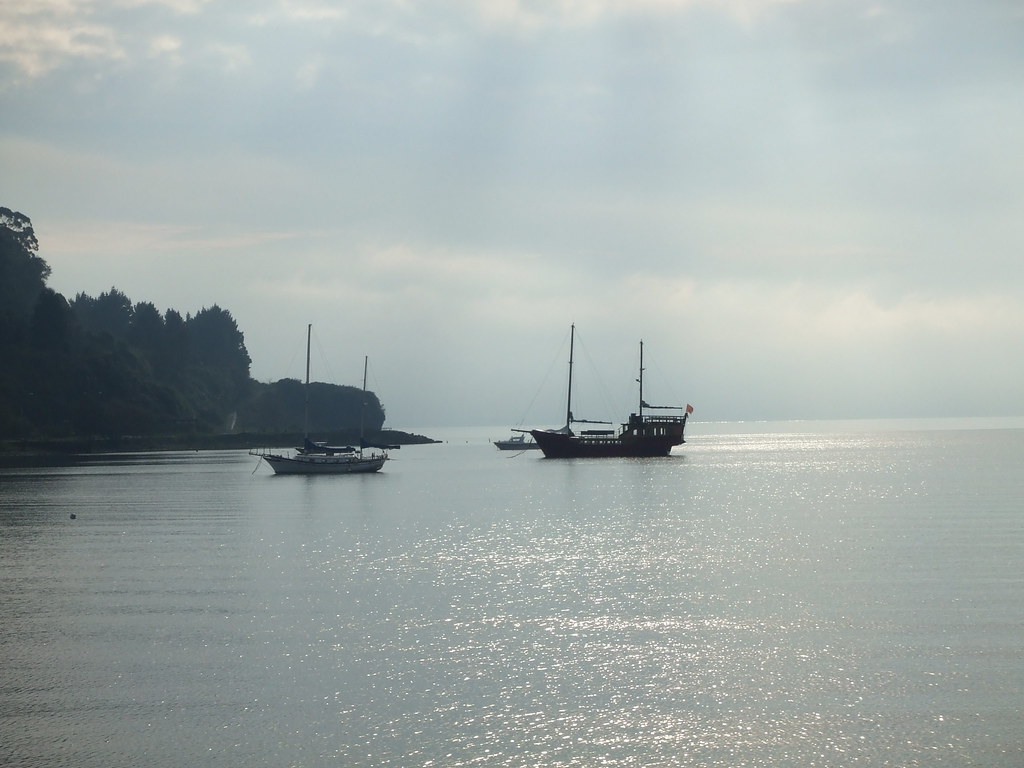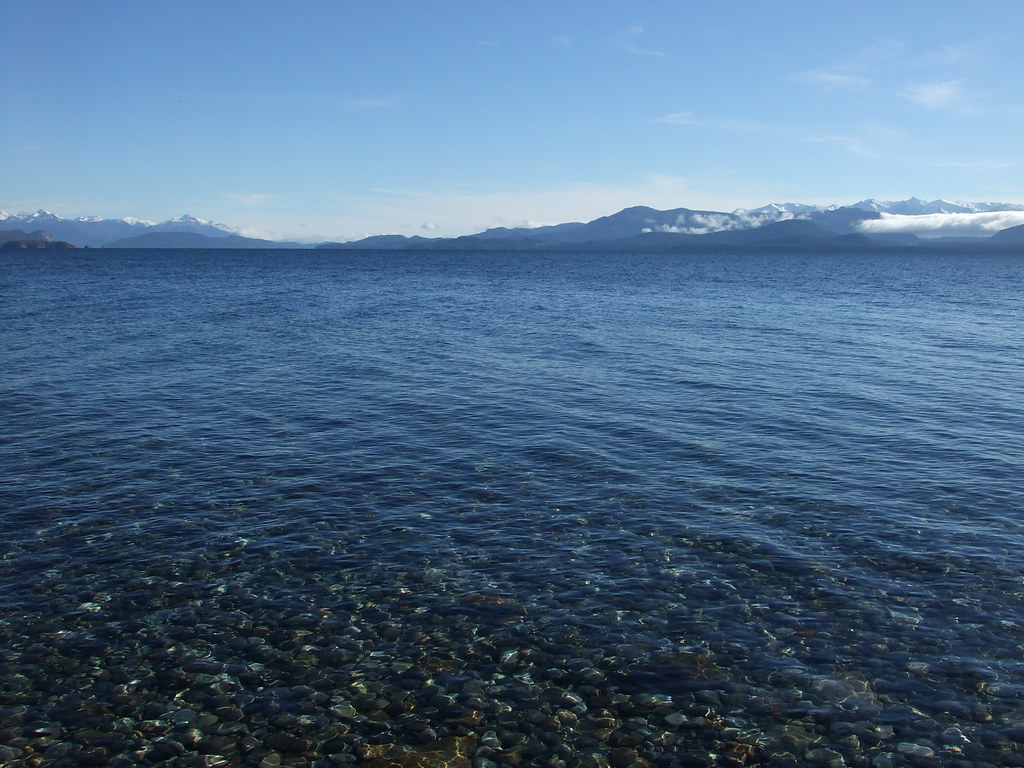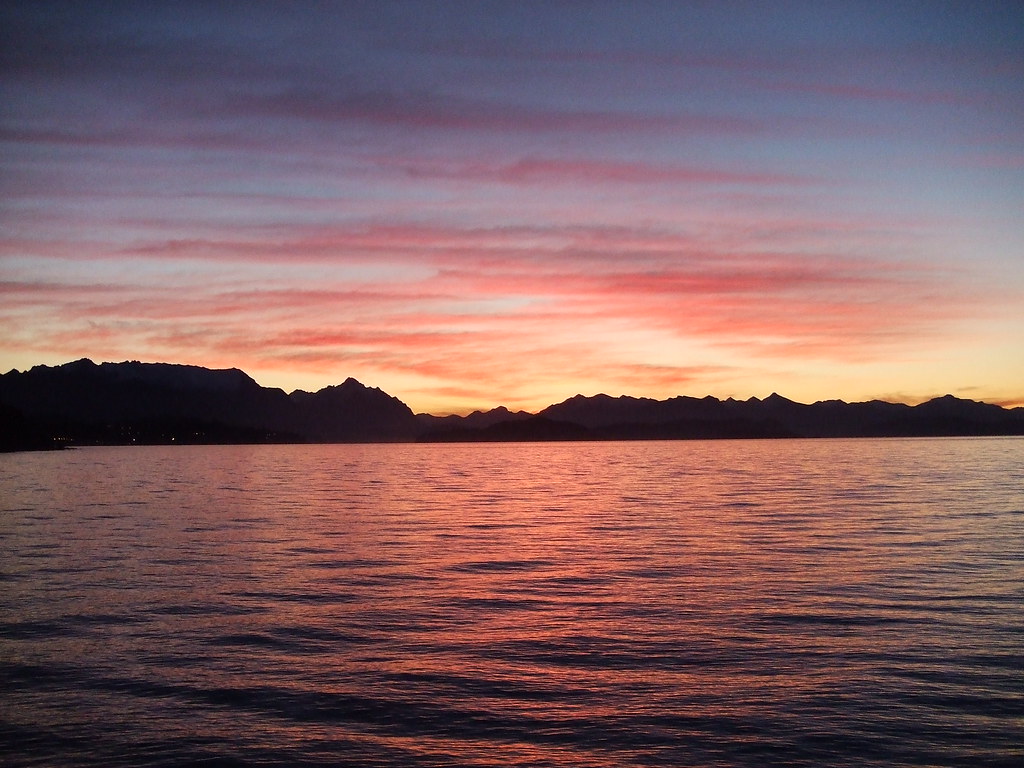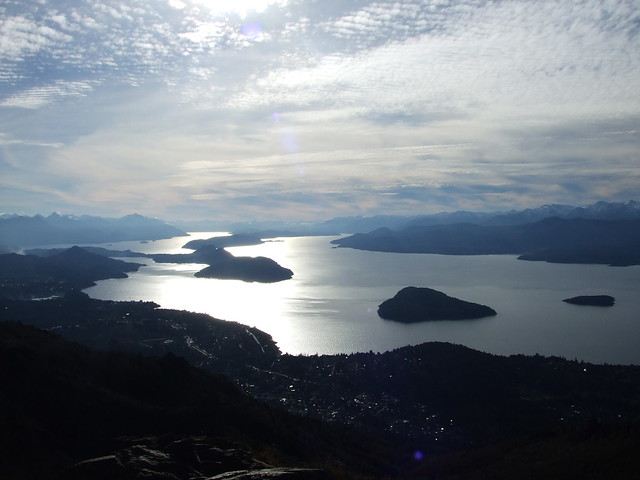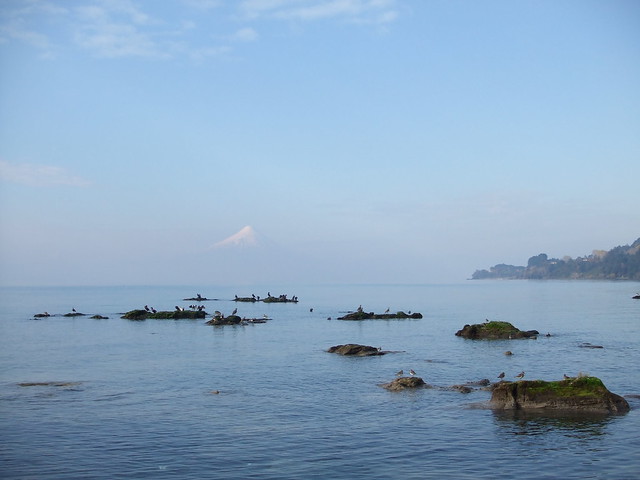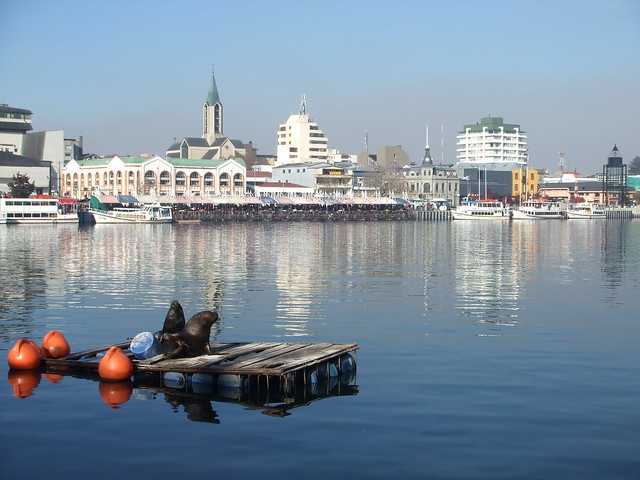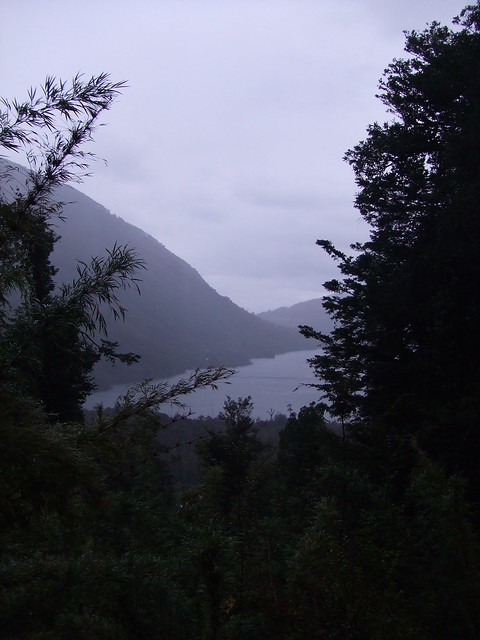What I wasn't prepared for, was volcanoes. Volcanoes to me are the stuff of legend. They happen in Pompeii, in ancient times, or in Iceland, where the whole landscape is volcanic. Of course I know that Chile is located on the Pacific ring of fire. That's why it has earthquakes, right? But duh, it also means it has volcanoes. Active ones.
So there we are, happily living the high life in Termas de Puyehue. From our balcony window we can see the snow-covered Volcán Puyehue, sitting in the Caulle volcanic range. It hasn't erupted in more than five decades. Carlos casually tells me that he saw a puff of smoke from the range during his cabalgata. This, he was told, is quite normal, especially in winter, where obviously the difference between the air temperature and that of the volcanic crater means more steam gets produced. It's when there's smoke in the heat of summer, or no smoke for days, that the locals start to worry.
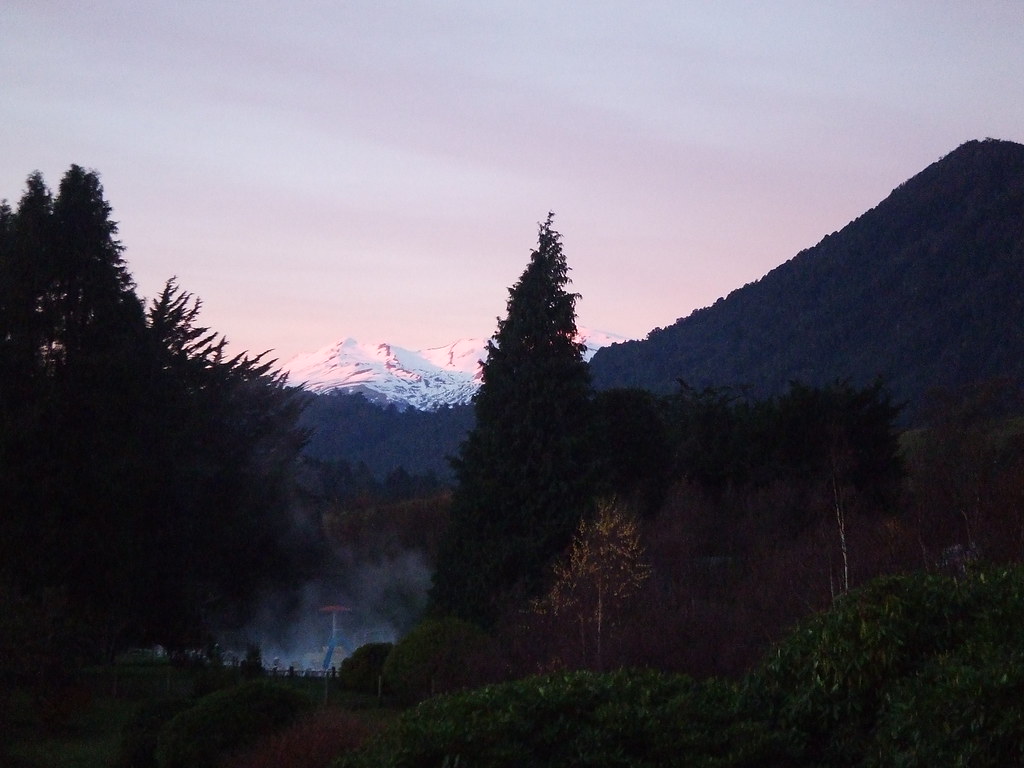 |
| Volcán Puyehue, before it erupted |
A couple of days later in Valdivia, we see on the morning news predictions of a seismic swarm for Puyehue - a series of smallish earthquakes in close succession. How exciting we think, and how funny that we were there just a few days before.
In Pucón, we giggle at a volcano warning system, joking to ourselves that we wouldn't be hanging around to watch the light change to red if there was smoke billowing from the crater of Volcán Villarrica. I lament that I've spent the whole week around volcanoes and have yet to see any smoke, annoyed but in good humour that Carlos has and I haven't.
Happily we return home from our holiday, go to sleep for a few hours before hooking ourselves back up to the internet to see what we've missed during the previous 9 days. It's then that I see the messages on Facebook. Where are you? Have you left Puyehue? Are you stuck waiting for a flight? It's then that I discover that as we were sitting in Pucón bus terminal, that volcano that from the hot volcanic springs of Puyehue we'd watch turn pink with the sunset, had exploded.
Over the coming days, as I return to my day job and start writing news stories about it, we discover that large parts of the region we had been staying in days before had been evacuated. The pass over the mountains to Argentina is closed. And the most beautiful place on earth is covered with ash, Bariloche's crystal blue waters grey with sediment.
It's then that I realise we've had a lucky escape, and that with a landscape of such great beauty, must come respect for the earth that created it.
Some of my stories about the Puyehue volcano:
- Volcán Puyehue: the latest outlook, I Love Chile (08/06/11)
- Satellite images of volcanic ash plume made available by authorities, I Love Chile (08/06/11)
- Life in the shelter: evacuees from Volcán Puyehue try to regain normality, I Love Chile (08/06/11)
- Puyehue volcano: latest, I Love Chile (14/06/11)
- Volcanic ash reaches Chile, I Love Chile (17/06/11)
- Puyehue evacuees return home, I Love Chile (20/06/11)



